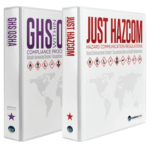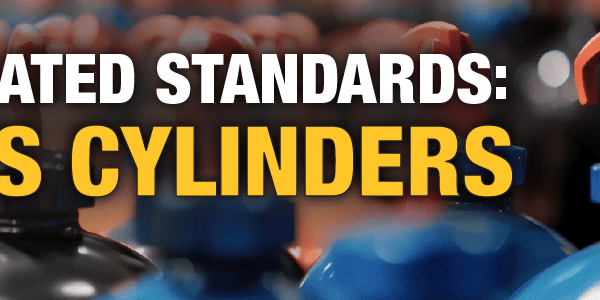
National Day of Mourning: Honoring Workers
April 28 is a day of solemn reflection in Canada, marked as the National Day of Mourning for workers who have been killed, injured, or made ill in the workplace. This day serves not only to pay tribute to those who have lost their lives or suffered due to workplace hazards but also to raise awareness about the importance of creating safe work environments. It is a call to action for employers, employees, and regulatory bodies to work together to ensure the workplace is as safe as possible.
One critical framework for protecting workers and preventing workplace injuries and fatalities is the Workplace Hazardous Materials Information System (WHMIS). WHMIS is a national communication standard for hazardous products in workplaces across Canada. It provides workers with essential information on handling hazardous materials safely, which can prevent many of the incidents that the National Day of Mourning seeks to acknowledge.
WHMIS was first introduced in Canada in 1988. It aims to protect workers by providing standardized labels, safety data sheets (SDS), and training programs on hazardous materials. Over the years, WHMIS has evolved to align with the Globally Harmonized System of Classification and Labeling of Chemicals (GHS), a worldwide effort to ensure consistency in labeling and hazard communication.
At its core, WHMIS ensures that workers know their risks and the best mitigation practices. This system is crucial for workers to handle chemicals, toxic substances, or other hazardous materials. WHMIS consists of:
- Labels: Every hazardous material in the workplace must have a WHMIS label. These labels include essential information such as the product name, a clear hazard symbol, risk phrases, and precautionary measures.
- Safety Data Sheets (SDS): SDS provide detailed information on the hazardous substances including the chemicals in the product, its potential health effects, safe handling procedures, and emergency measures.
- Worker Education and Training: Workers must receive proper training to understand WHMIS labels, SDS, and how to work safely with hazardous materials. Regular training ensures that workers are equipped to prevent accidents and understand the importance of safety protocols.
- Hazardous Materials Classification: Chemicals are classified according to the severity of their hazards. This classification helps workers understand whether a material poses health risks, fire hazards, or environmental dangers.
On the National Day of Mourning, we take time to reflect on workplace fatalities, injuries, and illnesses. We intend to mourn those we have lost and reinforce our commitment to safer workplaces. In this context, WHMIS plays an essential role in preventing the incidents that this day acknowledges.
Workplace injuries and fatalities often occur due to a lack of knowledge or proper safety precautions when handling hazardous materials. For example, exposure to chemicals without proper safety equipment, failure to recognize the risks of certain substances, or inadequate emergency procedures can result in severe injuries or even fatalities.
If more employers adhered to WHMIS guidelines, incidents such as chemical burns, respiratory issues, poisoning, and even long-term illnesses due to exposure could be significantly reduced. On the National Day of Mourning, reflecting on these types of incidents encourages a recommitment to safety standards, particularly WHMIS.
WHMIS has had a measurable impact on reducing injuries and fatalities in the workplace, particularly those related to hazardous materials. Here are some statistics that show its effectiveness:
- Reduction in Workplace Injuries and Illnesses:
- According to the Canadian Centre for Occupational Health and Safety (CCOHS), workplace fatalities in Canada have decreased by more than 50% since the 1990s. This decline can be attributed to workplace safety initiatives, including WHMIS, which has significantly educated workers about hazards and safe practices related to chemicals.
- Reduction in Chemical-Related Incidents:
- A 2019 report by the Workplace Safety and Insurance Board (WSIB) in Ontario found that businesses implementing comprehensive WHMIS training saw a 30-40% reduction in hazardous materials-related incidents. This highlights how worker training and education about safe handling can significantly lower the risk of accidents.
- Health and Safety Improvements:
- According to the Canadian Labour Congress (CLC), the implementation of WHMIS has contributed to a significant reduction in long-term, debilitating health conditions, such as respiratory diseases and skin cancer, that were once common due to chemical exposure in industries like manufacturing and construction.
- Training Impact on Safety:
- WHMIS training has proven effective in improving worker awareness of the risks involved with chemical exposure. A study by the Canadian Institute for Health Information (CIHI) in 2016 showed a decline in work-related illnesses, especially in industries with high chemical exposure. This has been particularly evident in industries like construction and manufacturing.
- Reduction in Severity of Injuries:
- Workers who received proper WHMIS training saw a 50% reduction in the severity of chemical-related injuries. With a better understanding of safety protocols and appropriate personal protective equipment (PPE), workers are less likely to suffer serious harm from hazardous materials.
Employers play a significant role in maintaining a safe and healthy work environment. For WHMIS to be effective, employers must ensure that:
- Proper labeling is maintained on all hazardous materials in the workplace.
- SDS are available and accessible to all workers who may come into contact with hazardous substances.
- Workers receive ongoing training to ensure they understand the potential dangers of the materials they work with and are well-prepared in emergencies.
Employers are responsible for identifying potential hazards, implementing control measures, and providing workers with the necessary resources to avoid injuries and illnesses. WHMIS is an essential tool in this process but requires constant attention and an ongoing commitment to safety.
Workers are also responsible for ensuring the safety of their colleagues and their own. This includes:
- Following safety protocols outlined in WHMIS training.
- Reporting unsafe working conditions to their supervisor or employer.
- Using personal protective equipment (PPE) when handling hazardous materials.
- Knowing how to respond in emergencies, such as chemical spills or exposure.
By taking an active role in safety, workers can help create a safer environment for themselves and others, reducing the number of incidents that result in injury or death.
The National Day of Mourning is not just about remembering those who have suffered or passed away due to workplace accidents. It is also a moment to renew our commitment to safety. By adhering to WHMIS regulations, conducting thorough safety training, and fostering a culture of safety in the workplace, we can work toward a future where fewer lives are lost or harmed due to preventable accidents.
Let this day serve as a reminder that safety is not just a set of rules, but a mindset. A proactive approach to workplace safety, including rigorous WHMIS compliance, can make a tangible difference in preventing the kinds of tragedies that we mourn on April 28.
In conclusion, as we observe the National Day of Mourning, let’s honor the lives lost by strengthening our resolve to create safer workplaces. By ensuring that WHMIS is not only understood but actively practiced in every workplace, we move closer to a safer, healthier future for all workers.
These statistics highlight the positive impact that WHMIS has had on reducing injuries and illnesses related to hazardous materials, emphasizing the ongoing importance of safety standards in preventing workplace tragedies.
ICC Compliance Center has a team of full-time Regulatory Experts who have years of experience and are certified/recognized in their field of expertise. If you need guidance to help keep your workplace safe, call 888.442.9628 (USA) or 888.977.4834 (Canada) or send us an email.
Stay up to date and sign up for our newsletter!
We have all the products, services and training you need to ensure your staff is properly trained and informed.
 GHS Classification GHS Classification(OSHA) Training |
 OHSA OHSAPublications |
 GHS within GHS withinOHSA Training |






 ICC USA
ICC USA ICC Canada
ICC Canada